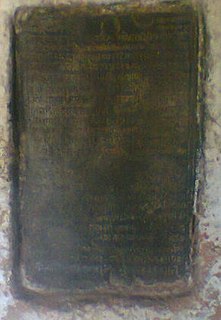 W
WNepali is an Indo-Aryan language of the sub-branch of Eastern Pahari. It is the official language of Nepal and one of the 22 scheduled languages of India. Also known by the endonym Khas kura, the language is also called Nepalese, Gorkhali or Parbatiya in some contexts. It is spoken mainly in Nepal and by about a quarter of the population in Bhutan. In India, Nepali has official status in the state of Sikkim and in the Darjeeling District and Kalimpong district of West Bengal. It has a significant number of speakers in the states of Arunachal Pradesh, Assam, Himachal Pradesh, Manipur, Mizoram and Uttarakhand. It is also spoken in Myanmar and by the Nepali diaspora worldwide. Nepali developed in proximity to a number of Indo-Aryan languages, most notably the other Pahari languages and Maithili and shows Sanskrit influence. However, owing to Nepal's location, it has also been influenced by Tibeto-Burman languages. Nepali is mainly differentiated from Central Pahari, both in grammar and vocabulary, by Tibeto-Burman idioms owing to close contact with this language group.
 W
WDivyopadesh, also Divya Upadesh, is a collection of teachings from Prithvi Narayan Shah, the founding monarch of the Kingdom of Nepal, as imparted by him to his courtiers and royal priests, toward the end of his life, around 1774–75. It is also considered autobiographical as it contains accounts of his motivations and actions. It was posthumously published for the first time in book form almost 180 years later, in 1952-53. Other versions of the book, at least one of them with reorganisation of sayings under different categories, have since been published. It is regularly cited by political commentators and politicians as a moral authority on the conduct of people and government, and guidance on domestic and foreign policies. The collection of sayings delivered in the old Nepali dialect of the era is also considered to be of literary significance, and has been included in the course syllabus for Master of Arts (Nepali) program of Guwahati University, India. It is also considered the first work of essay of Nepali literature.
 W
WIndian Gorkhas, also known as Nepali Indians, are Nepali language-speaking Indian citizens. The term "Indian Gorkha" is used to differentiate the ethnic Gorkha citizens of India from the citizens of Nepal.
 W
WThis is a list of poets who have written in the Nepali language:
 W
WIndian Gorkhas, also known as Nepali Indians, are Nepali language-speaking Indian citizens. The term "Indian Gorkha" is used to differentiate the ethnic Gorkha citizens of India from the citizens of Nepal.
 W
WNepali literature refers to the literature written in Nepali language. The Nepali language has been the national language of Nepal since 1958.
 W
WSahi Shabda is a Nepali language thesaurus written by Father William Bourke SJ. It was the first comprehensive Nepali thesaurus. It was published 1995 and won the prestigious Madan Puraskar, 2051 B.S.; the highest literary honor of Nepal.
 W
WStone inscriptions in the Kathmandu Valley refer to ancient stone slabs, pillars and pedestals with text carved on them. They are the most important sources for the history of Nepal. A vast majority of the inscriptions found in Nepal are from the Kathmandu Valley where they are an ubiquitous element at heritage sites. They consist of royal edicts and dedicatory notes on Hindu and Buddhist temples, stupas, statues, water spouts and other architectural structures.